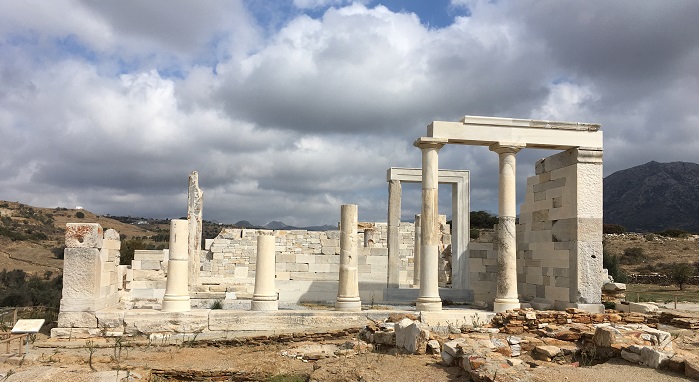
Thor and I found timeless serenity in the quiet valley where the goddess of fertility and the seasons has been honored since ancient days.
NOTE: Since our recent trip to Greece to research more settings for my novel-in-progress, THE ARIADNE DISCONNECT, Thor and I knew we had to return to this magical region. My first entry in this new blog series posted here on Saturday, 10/20/2018. It gives an overview of our rambles from Athens to seven islands in the Dodecanese and Cyclades groups, ending our ferry-hopping pilgrimage on the anciently sacred island of Delos.
Near the village of Sangri in one of the central valleys of Naxos, the Sanctuary of Demeter is planted fittingly among farms and orchards, since Demeter was the Greek goddess of fertility and the seasons. Even before Demeter’s temple was built, this was the site of open-air worship of an Earth goddess. We visited in early October when the shorn fields had turned brown, but in the spring this valley would be lush green and filled with wildflowers, including the wild red poppies that are Demeter’s sacred flower. As Thor and I wound around the hills in our rental car, we spotted the temple and its later small Christian “breadloaf” chapel beneath the maternal breasts of two rounded hills.
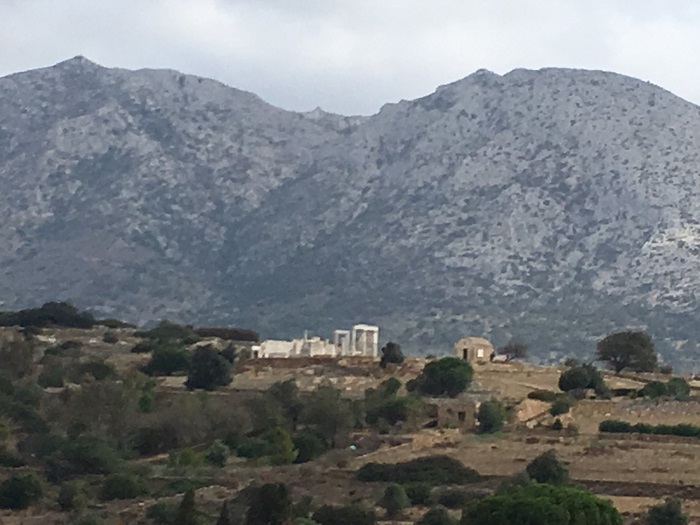
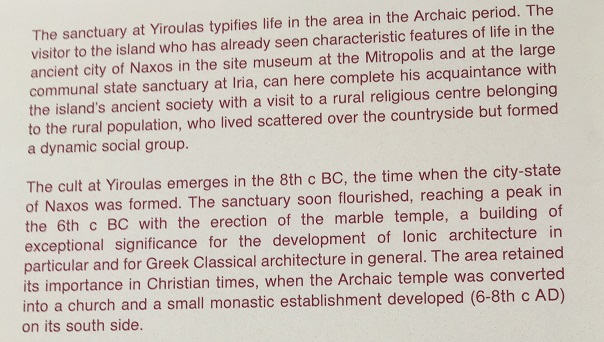
There is a never a shortage of stones in the Greek islands, and the roadway approaching the site was lined with the rock fences that you can see winding all over the valley.
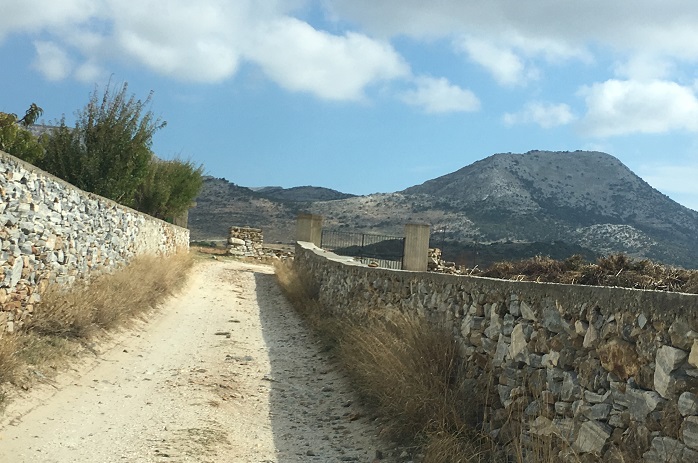
We walked up a path paved with more stones to the ancient temple and the later small chapel.
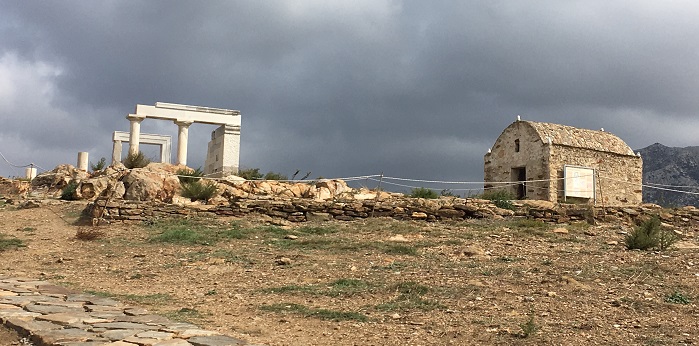
It was another cloudy, blustery, and rather cool day, so I was glad I’d brought warm layers.
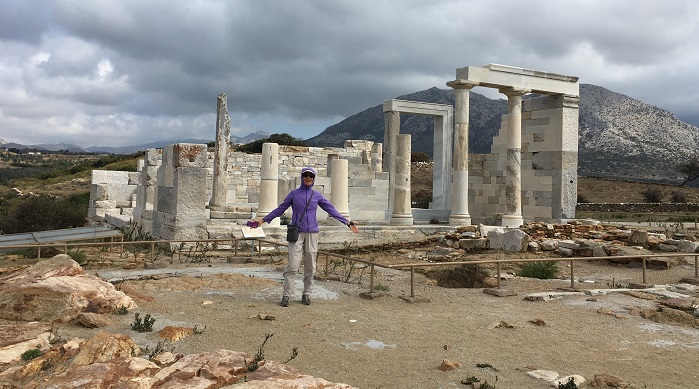
Despite the wind, we felt a calm peacefulness in this place honoring the ancient Earth goddesses. Demeter, the Greek personification of the ancient deity, probably emerged around 1400 B.C. among the Mycenaeans. She was one of the Olympians, sister of Zeus, who blessed the earth with the growth of grains and fruits for the benefit of humans. Those Olympians could be incestuous, so Demeter had a daughter Persephone fathered by her brother Zeus. The beautiful, innocent Persephone was her mother’s chief joy until the young maiden was kidnapped. While she was picking flowers in a meadow, Hades, the ruler of the underground and kingdom of the dead, opened the earth and rode out in his chariot to snatch her and take her underground with him.
Months passed while the grief-stricken Demeter ignored the earth and searched for her daughter. Darkness, cold, and barrenness gripped the once-fertile lands. Finally Zeus intervened and forced Hades to agree to release his captive Persephone, with whom he was in love. But Hades tricked Persephone, who had consumed nothing while in captivity, into sucking the juice of six pomegranate seeds before leaving. That meant he could keep her underground for six months of the year, ruling over the dead beside him. Those months correspond to cold, lifeless fall and winter. When Persephone returns each spring and summer to Demeter, then the earth is blessed with seasonal fruitfulness again.
I believe this marble carving from the site represents Persephone’s pomegranate fruits:
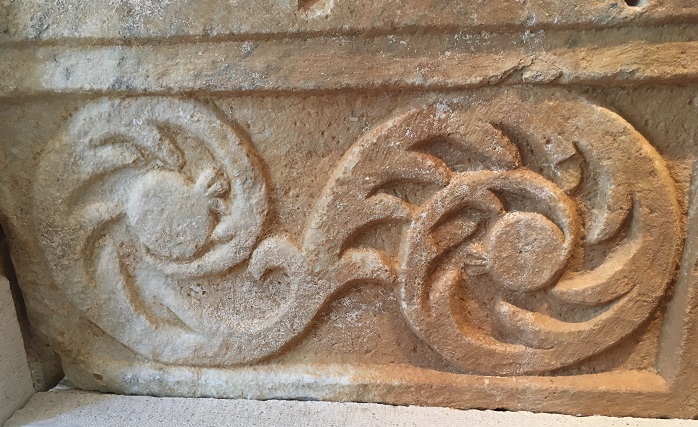
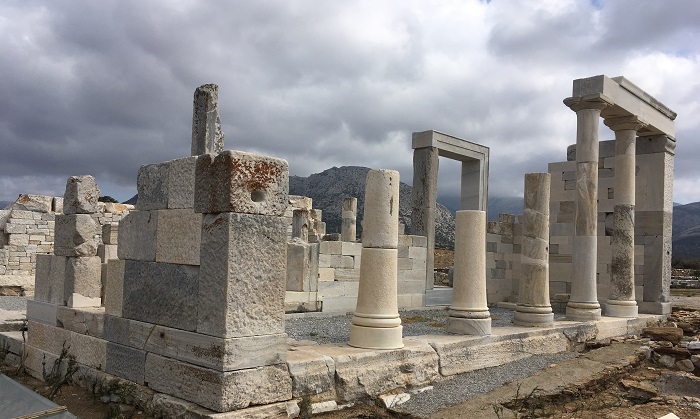
Thor is always interested in the construction of the stone walls of these ancient buildings. The layering and different sizes of blocks are fitted like an intricate puzzle.
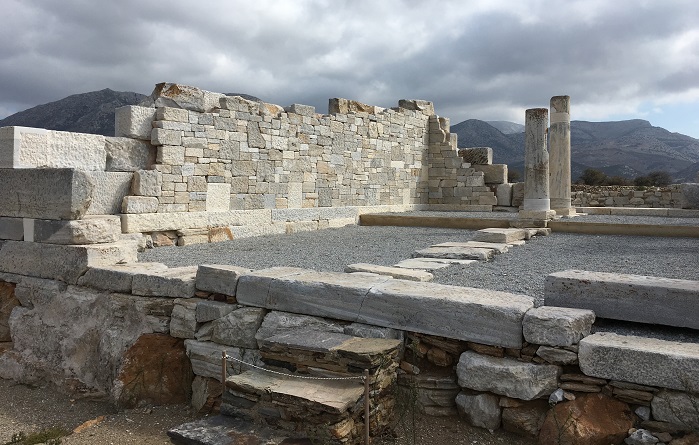
But there are secret niches to shelter birds like this sparrow:
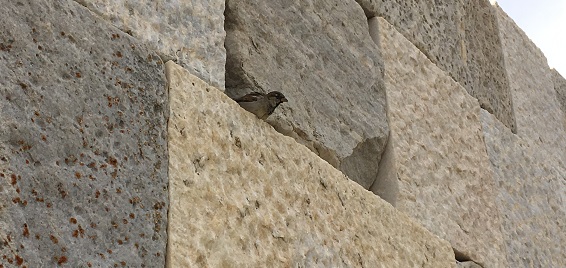
Many of the original marble pieces were taken over the ages for buildings elsewhere, and the excavations have unearthed many more pieces not yet reassembled:
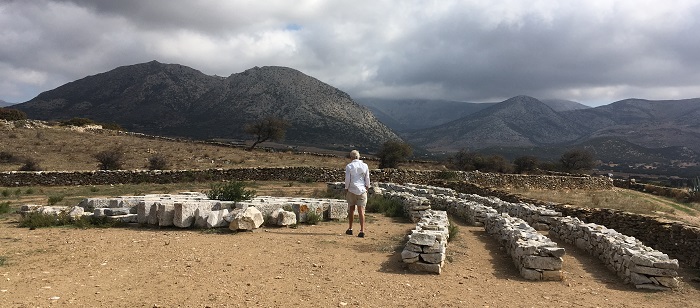
The small onsite museum features a partial architectural reconstruction and explanations of special features of the temple.
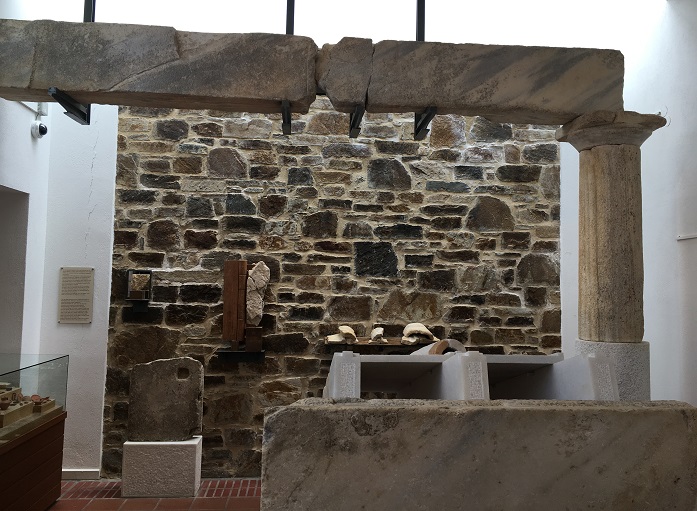
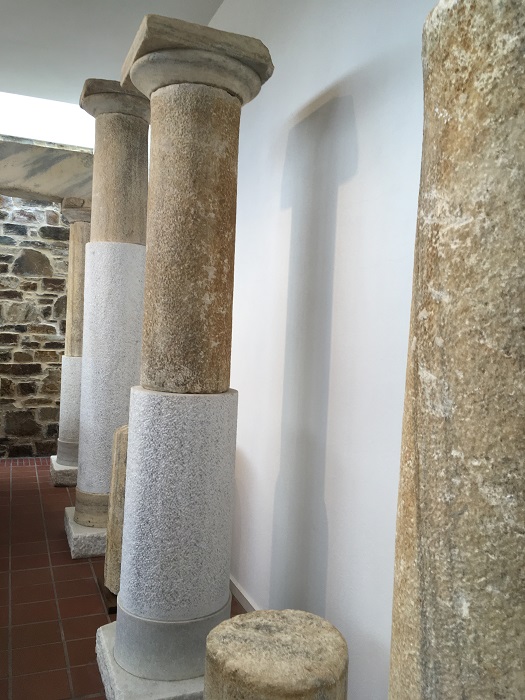
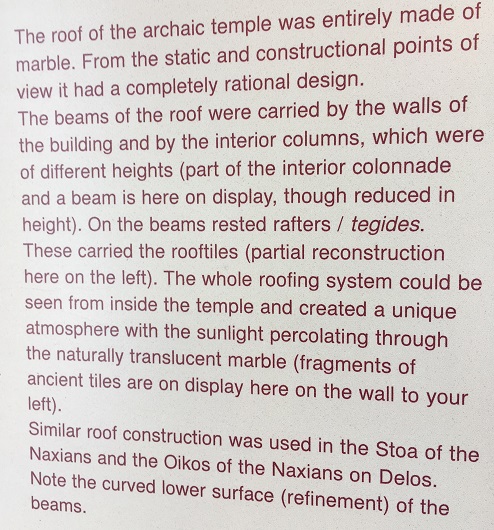
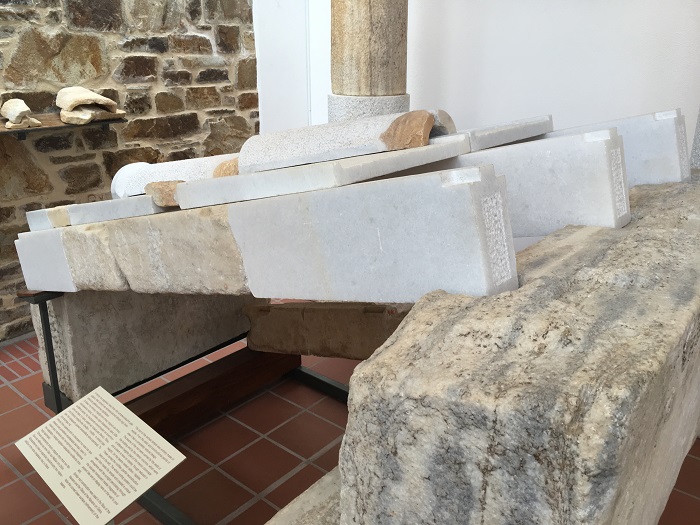
These artifacts were found on the site:
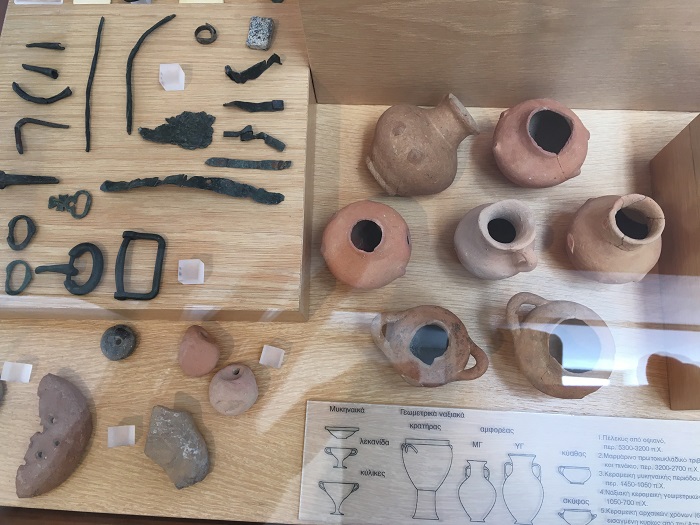
As the builders dug holes and pits for support structures, they offered pottery as gifts to Demeter, deliberately breaking the vases and other vessels they sacrificed. These shards are from some of the offerings:
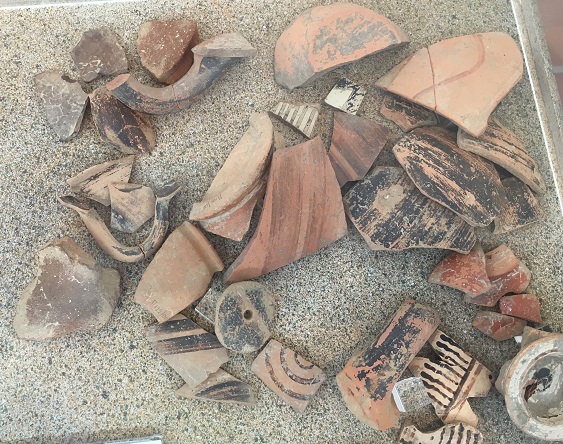
As the site information noted, in the early days of the sanctuary (from the 8th century B.C.), the Demeter cult was practiced in the open on this same rise above the fields. Pits dug in an east-west orientation held offerings of plant juices, the directions symbolizing the connection of human life and death with the seasons of decay and renewal in nature. Demeter was also primary in the celebration of the Eleusinian Mysteries that guided the initiates toward understanding of death and rebirth.
When the Christians arrived and took over, they converted the temple to a basilica around 600 A.D. The museum displayed a partial reconstruction of that stage, along with more information:
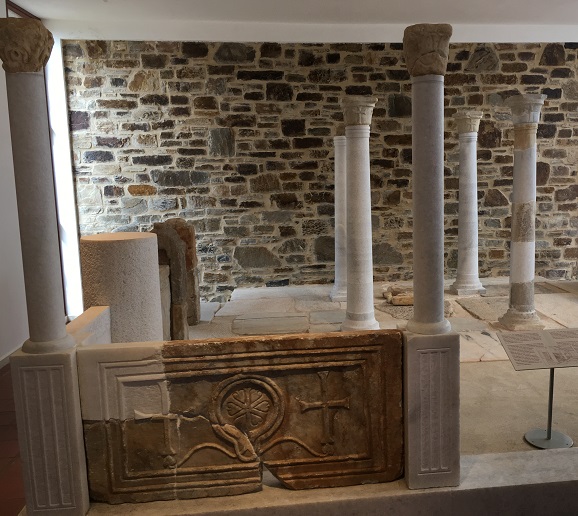
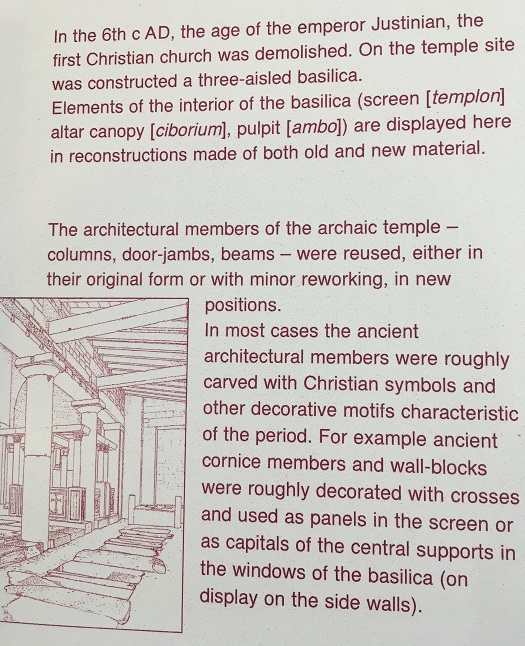
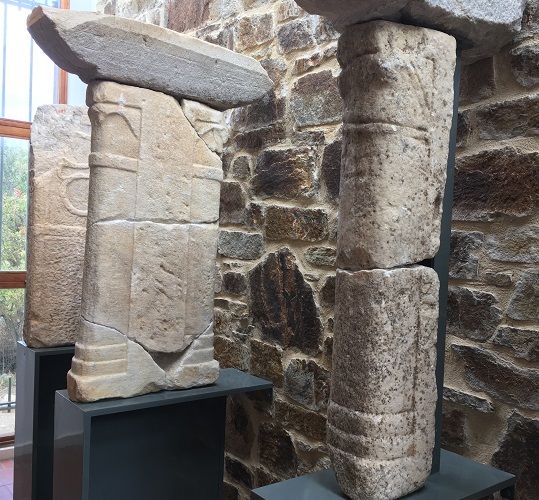
After checking out the museum, Thor and I were ready for the picnic we’d brought, though it was a bit of a challenge to find a sheltered spot out of the wind. We ended up leaning against one of the rock fences on the site boundary, near a tree bearing loads of Demeter’s bounty in hard fruits:
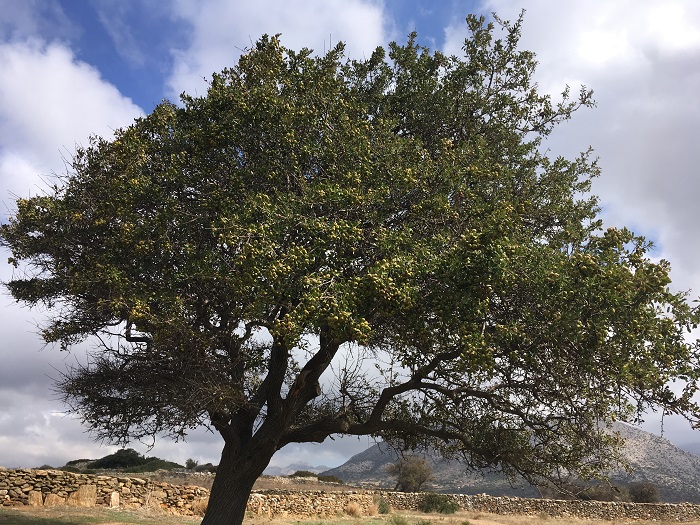
We listened to the wind and the quiet, looking out over the fields, enjoying the tranquility. Then came the sound of a tractor, and two farmers emerged through a gate, passing us as they waved and grinned. That eternal philoxenia — love of the stranger — still lives in Greece. We spilled a libation on the ground to thank Demeter: “Efcharisto! Chairete!”
Next week: We board another ferry for Mykonos and Apollo’s sacred island of Delos!
*****
You will find The Rambling Writer’s blog posts here every Saturday. Sara’s latest novel from Book View Cafe is available in print and ebook: The Ariadne Connection. It’s a near-future thriller set in the Greek islands. “Technology triggers a deadly new plague. Can a healer find the cure?” The novel has received the Chanticleer Global Thriller Grand Prize and the Cygnus Award for Speculative Fiction. Sara has recently returned from another research trip in Greece and is back at work on the sequel, The Ariadne Disconnect. Sign up for her quarterly email newsletter at www.sarastamey.com

1 thought on “The Rambling Writer Explores More Greek Islands, Part 33: The Sanctuary of Demeter on Naxos”